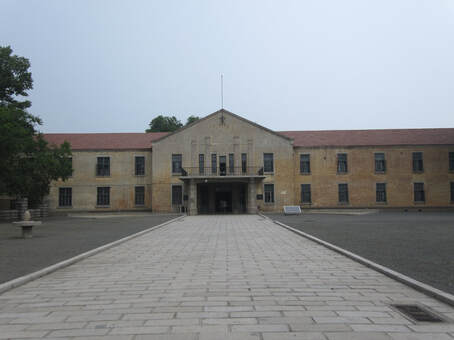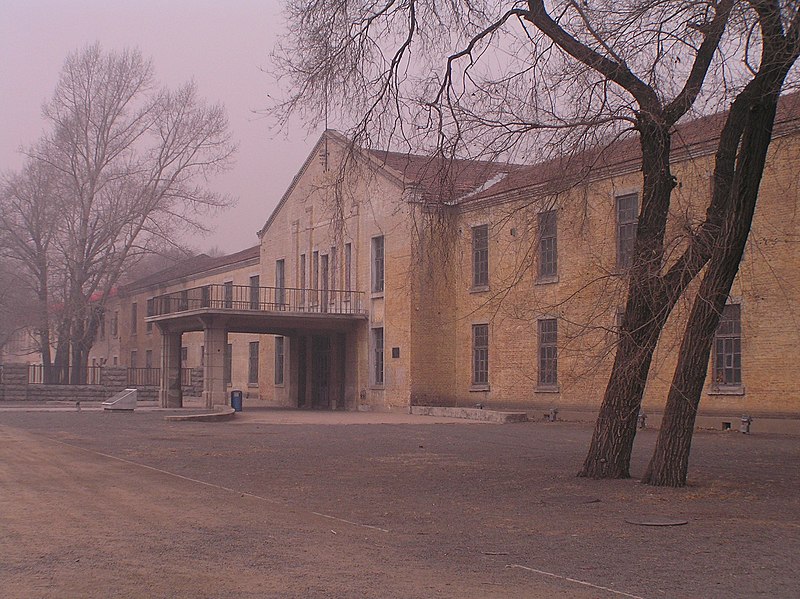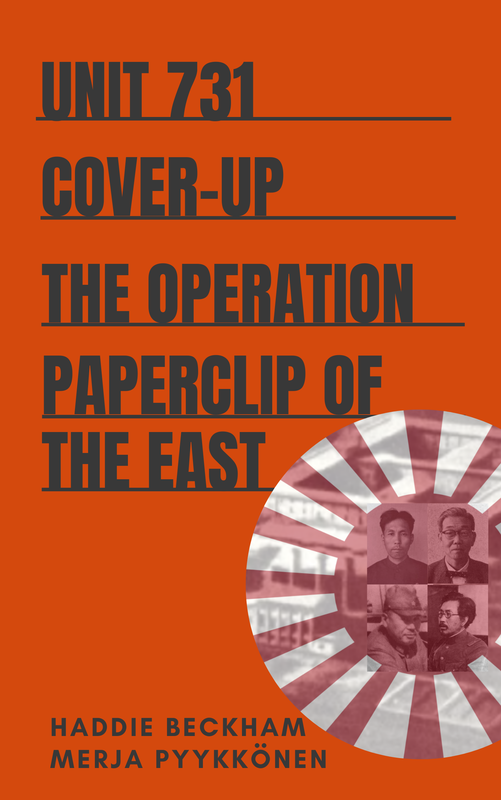- Home
- Stories
-
Internship
- Summer 2024 Internship
- Summer 2023 Internship
- Fall 2022 Internship
- Summer 2022 Internship
- Summer 2021 Internship
- Fall 2020- Spring 2021 Internship
- Summer 2020 Internship
- Fall 2019 Internship
- Summer 2019 Internship >
- School Year 2018-2019 Internship
- Summer 2018 Internship >
- Fall 2017 Internship
- Summer 2017 Internship >
- Books
- Archives
-
Resource Page
-
Supplementary Research Guides
>
- Unit 731 - Guide >
-
Philippines' Resistance - Guide
>
- Philippines World War II Timeline
- The Japanese Invasion & Conquest of the Philippines
- Bataan Death March
- Formation of Underground Philippines Resistance
- Supplies of the Guerrilla Fighters
- The Hukbalahap
- Hunter's ROTC
- Marking's Guerrillas
- United States Army Forces in the Philippines of Northern Luzon (USAFIP-NL)
- The Aetas
- Chinese and Filipino-Chinese Nationalist Guerrilla Units
- The Female Faces of the Philippine Guerrillas
- Rising Sun Flag - Guide >
- Pinay Guerrilleras - Guide >
- Fall of Singapore - Guide >
- Three Years and Eight Months - Guide >
- Siamese Sovereignty - Guide >
- The Khabarovsk War Crimes Trial - Guide >
- Unit 731 Cover-up : The Operation Paperclip of the East - Guide >
- Marutas of Unit 731 - Guide >
- Prince Konoe Memoir - Guide >
- Competing Empires in Burma - Guide >
- Battle of Shanghai - Guide >
- Ishi Shiro - Guide >
- Taiwan The Israel of the East - Guide >
- Seeking Justice for Biological Warfare Victims of Unit 731 - Guide >
- Rice and Revolution - Guide >
- Clash of Empires - Guide >
-
Hunger for Power and Self-SufficiencyI - Guide
>
- The Influence of War Rations on Post-War Culinary Transformations
- How World War II Complicated Food Scarcity and Invention
- American Military Innovations
- Government-Sponsored Food Inventions in Europe during World War II
- Feeding the Army: The Adaptation of Japanese Military Cuisine and Its Impact on the Philippines
- Mixed Dishes: Culinary Innovations Driven by Necessity and Food Scarcity
-
Denial A Quick Look of History of Comfort Women and Present Days’ Complication - Guide
>
- The Comfort Women System and the Fight for Recognition
- The Role of Activism and International Pressure
- The Controversy over Japanese History Textbooks
- The Sonyŏsang Statue and the Symbolism of Public Memorials
- Activism and Support from Japanese Citizens
- The Future of Comfort Women Memorials and Education
- Echoes of Empire: The Power of Japanese Propaganda - Guide >
- Lesson Plans >
-
Supplementary Research Guides
>
Unit 731 at Manchuria
|
Unit 731 was created in 1936 by the authorization of Emperor Hirohito in Japanese-occupied Manchuria with the aim of developing biological weapons. It had a partner unit, Unit 100. Unit 731 was supported by Japanese universities and medical schools which supplied doctors and research staff. Organized under the alias of The Epidemic Prevention and Water Purification Department of the Kwantung Army, Unit 731 operated as a covert chemical and bacteriological warfare research and development unit, conducting and responsible for some of the most atrocious war crimes of imperial Japan. Unit 731 was led by General Shiro Ishii. Ishii’s Unit fostered close relations with other secret facilities, such as Unit 100, led by General Yamada, and the Kwantung Army, from whom the Unit received many of their test subjects. Prisoners were referred to as maruta, “logs” for secrecy and dehumanization reasons.
|
Current Day Unit 731 Museum – Harbin, China
|
According to scholars, no less than 3000 prisoners at Unit 731 were murdered as a result of the experiments, mainly Chinese, but also prisoners of different ethnicities and nationalities; According to several former workers of Unit 731 and Unit 100, the laboratories were constructed for the purpose of manufacturing bacteriological weapons, which the Japanese Army would use against namely the Soviet Union, Mongolia, and China.
Soviet investigation of Unit 731 and Unit 100
|
Unit 731 Museum (other perspective) – Harbin, China
|
The Soviet investigation team determined that in order for the facilities to remain shrouded in secrecy they were named “Water Supply and Prophylaxis Administration of the Kwantung Army” and “Hippo- -Epizootic Administration of the Kwantung Army.” In 1941, after Adolf Hitler invaded the USSR, however, the names were changed to “Unit 731” and “Unit 100.” General Ishii was placed in charge of Unit 731 and Major General Wakamatsu of the Veterinary Service led Unit 100. The Soviets also were able to determine that these units were composed of and directed by some of the top bacteriologic experts in Japan. Unit 731 alone had approximately 3,000 employees. Further, while Unit 731 and Unit 100 were the main facilities, each had numerous branches, connecting to the Kwantung Army, the Tama Unit in Nanking, also known as Ei-1644, and other detachments. The main function of these branches was “to prepare for the basic employment in war of the bacteriological weapons produced by the units.”
|
These branches were directly subordinated to the Kwantung Army’s Commander-in-Chief and located within the immediate vicinity of the Soviet-Manchurian border. According to defendant Matsumura, that unit’s placement in Manchuria, close to the Soviet border, was ideal for the following reason: “In the case of war with the Soviet Union, bacteriological weapons would be used against the neighboring cities of Voroshilova, Khabarovsk, Blagoveshenska, and Chita.” This was all part of Japan’s Kantokuen plan to invade the USSR. Defendant Kawashima stated, however, a second reason why units 100 and 176 where constructed in Manchuria, saying that Manchuria offered a more fruitful possibility to gather a large collection of “human material from persons of non-Japanese nationalities” for the production of bacteriological weapons. The Japanese government had ruled it illegal to conduct human experimentation on Japanese citizens or within Japan. Therefore, all experiments with human test subjects had to be conducted in other areas under Japanese occupation.
Related Book
Unit 731 Cover-up :
|
|
Pacific Atrocities Education
730 Commercial Street San Francisco, CA 94108 415-988-9889 |
Copyright © 2021 Pacific Atrocities Education.
We are a registered 501 (c)(3) charity. |
- Home
- Stories
-
Internship
- Summer 2024 Internship
- Summer 2023 Internship
- Fall 2022 Internship
- Summer 2022 Internship
- Summer 2021 Internship
- Fall 2020- Spring 2021 Internship
- Summer 2020 Internship
- Fall 2019 Internship
- Summer 2019 Internship >
- School Year 2018-2019 Internship
- Summer 2018 Internship >
- Fall 2017 Internship
- Summer 2017 Internship >
- Books
- Archives
-
Resource Page
-
Supplementary Research Guides
>
- Unit 731 - Guide >
-
Philippines' Resistance - Guide
>
- Philippines World War II Timeline
- The Japanese Invasion & Conquest of the Philippines
- Bataan Death March
- Formation of Underground Philippines Resistance
- Supplies of the Guerrilla Fighters
- The Hukbalahap
- Hunter's ROTC
- Marking's Guerrillas
- United States Army Forces in the Philippines of Northern Luzon (USAFIP-NL)
- The Aetas
- Chinese and Filipino-Chinese Nationalist Guerrilla Units
- The Female Faces of the Philippine Guerrillas
- Rising Sun Flag - Guide >
- Pinay Guerrilleras - Guide >
- Fall of Singapore - Guide >
- Three Years and Eight Months - Guide >
- Siamese Sovereignty - Guide >
- The Khabarovsk War Crimes Trial - Guide >
- Unit 731 Cover-up : The Operation Paperclip of the East - Guide >
- Marutas of Unit 731 - Guide >
- Prince Konoe Memoir - Guide >
- Competing Empires in Burma - Guide >
- Battle of Shanghai - Guide >
- Ishi Shiro - Guide >
- Taiwan The Israel of the East - Guide >
- Seeking Justice for Biological Warfare Victims of Unit 731 - Guide >
- Rice and Revolution - Guide >
- Clash of Empires - Guide >
-
Hunger for Power and Self-SufficiencyI - Guide
>
- The Influence of War Rations on Post-War Culinary Transformations
- How World War II Complicated Food Scarcity and Invention
- American Military Innovations
- Government-Sponsored Food Inventions in Europe during World War II
- Feeding the Army: The Adaptation of Japanese Military Cuisine and Its Impact on the Philippines
- Mixed Dishes: Culinary Innovations Driven by Necessity and Food Scarcity
-
Denial A Quick Look of History of Comfort Women and Present Days’ Complication - Guide
>
- The Comfort Women System and the Fight for Recognition
- The Role of Activism and International Pressure
- The Controversy over Japanese History Textbooks
- The Sonyŏsang Statue and the Symbolism of Public Memorials
- Activism and Support from Japanese Citizens
- The Future of Comfort Women Memorials and Education
- Echoes of Empire: The Power of Japanese Propaganda - Guide >
- Lesson Plans >
-
Supplementary Research Guides
>


